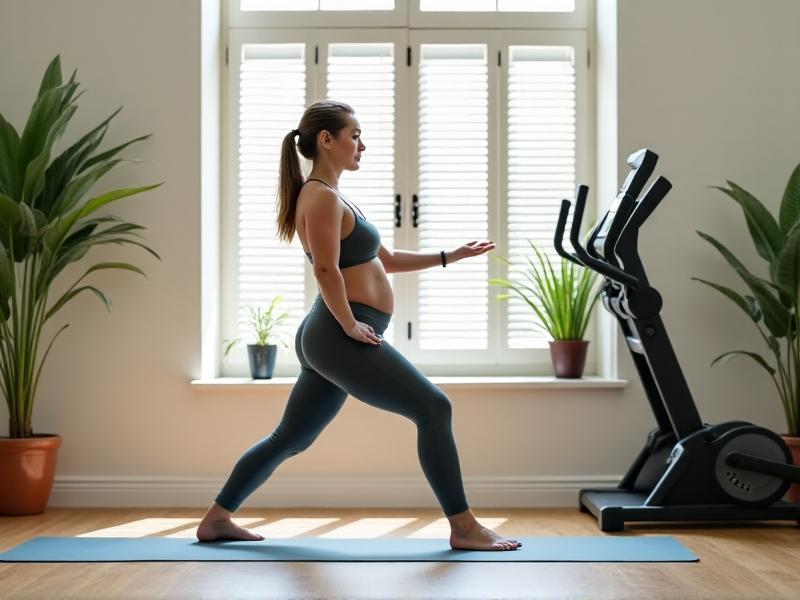C-Section Incision-Safe Yoga Flow Sequences
Understanding C-Section Recovery and Yoga
Recovering from a Cesarean section (C-section) is a unique journey that requires patience, care, and mindful movement. A C-section is major abdominal surgery, and the incision site needs time to heal properly. During this recovery period, many new mothers seek gentle ways to regain strength, flexibility, and mental clarity. Yoga, when practiced safely, can be an excellent tool for postpartum recovery. However, it’s crucial to approach yoga with caution, especially when it comes to movements that engage the core or put pressure on the incision site.
Yoga can help improve circulation, reduce stress, and promote healing, but it’s essential to listen to your body and avoid overexertion. In the early weeks postpartum, focus on breathwork and gentle stretches that don’t strain the abdominal area. As you progress, you can gradually incorporate more dynamic movements. Always consult your healthcare provider before starting any postpartum exercise routine, especially after a C-section.

Breathwork for Healing and Relaxation
Breathwork is a foundational aspect of yoga that can be incredibly beneficial during C-section recovery. Deep, mindful breathing helps activate the parasympathetic nervous system, promoting relaxation and reducing stress. It also encourages oxygen flow to the incision site, which can aid in healing. One simple yet effective breathwork technique is diaphragmatic breathing, also known as belly breathing.
To practice diaphragmatic breathing, sit or lie down in a comfortable position. Place one hand on your chest and the other on your belly. Inhale deeply through your nose, allowing your belly to rise as you fill your lungs with air. Exhale slowly through your mouth, feeling your belly fall. Repeat this for 5–10 minutes, focusing on the rhythm of your breath. This practice can be done daily and is especially helpful during moments of discomfort or anxiety.

Gentle Stretches for Post-C-Section Recovery
Once you feel ready to incorporate gentle stretches into your routine, focus on movements that open up the chest, shoulders, and hips without putting strain on the abdominal area. Cat-Cow stretch is an excellent option for gently mobilizing the spine and improving posture. Start on your hands and knees, with your wrists aligned under your shoulders and your knees under your hips. Inhale as you arch your back, lifting your head and tailbone toward the ceiling (Cow pose). Exhale as you round your spine, tucking your chin to your chest and drawing your belly button toward your spine (Cat pose). Repeat this sequence 5–10 times, moving slowly and mindfully.
Another beneficial stretch is the Seated Forward Fold, which helps release tension in the lower back and hamstrings. Sit on the floor with your legs extended in front of you. Inhale and lengthen your spine, then exhale as you hinge at your hips to fold forward. Keep the movement gentle and avoid forcing yourself into the stretch. You can place a pillow or folded blanket under your hips for added comfort.

Core-Strengthening Yoga Poses for Later Recovery
As your incision heals and your strength returns, you can begin to incorporate core-strengthening yoga poses into your practice. It’s essential to start slowly and avoid any movements that cause pain or discomfort. Bridge pose is a gentle way to engage the core and strengthen the glutes and lower back. Lie on your back with your knees bent and your feet flat on the floor, hip-width apart. Inhale as you lift your hips toward the ceiling, engaging your glutes and core. Exhale as you slowly lower your hips back to the mat. Repeat this 5–8 times, focusing on controlled movement.
Another effective pose is the Modified Plank, which helps build core stability without putting excessive pressure on the abdominal area. Start on your hands and knees, then step your feet back to come into a plank position with your knees on the mat. Keep your body in a straight line from your head to your knees, engaging your core. Hold this position for 10–20 seconds, gradually increasing the duration as you build strength.
Restorative Yoga for Postpartum Healing
Restorative yoga is a deeply relaxing practice that can support physical and emotional healing during the postpartum period. This style of yoga uses props like bolsters, blankets, and blocks to support the body in passive poses, allowing you to fully relax and release tension. One restorative pose that’s particularly beneficial for C-section recovery is Supported Reclining Bound Angle pose. Place a bolster or folded blanket lengthwise on your mat and sit in front of it with your knees bent and the soles of your feet together. Slowly recline onto the bolster, allowing your back and head to be fully supported. Place a folded blanket or pillow under each knee for added comfort. Close your eyes and breathe deeply, holding this pose for 5–10 minutes.
Another restorative pose is Legs-Up-the-Wall, which helps reduce swelling in the legs and promotes relaxation. Sit close to a wall and swing your legs up so that your heels rest against the wall. Lie back on the mat and place a folded blanket or pillow under your hips for support. Rest your arms at your sides with your palms facing up. Close your eyes and focus on your breath, holding this pose for 5–15 minutes.
Building a Safe and Sustainable Yoga Practice
As you continue your postpartum yoga journey, it’s important to build a practice that feels safe, sustainable, and supportive of your healing process. Start with shorter sessions, around 10–15 minutes, and gradually increase the duration as your strength and stamina improve. Pay close attention to your body’s signals and avoid pushing yourself too hard. If you experience pain, discomfort, or any unusual symptoms, stop immediately and consult your healthcare provider.
Incorporate a mix of breathwork, gentle stretches, and restorative poses into your routine to address both physical and emotional well-being. Remember that recovery is a gradual process, and it’s okay to take things one step at a time. By approaching yoga with mindfulness and self-compassion, you can create a practice that supports your healing and helps you feel more connected to your body during this transformative time.







